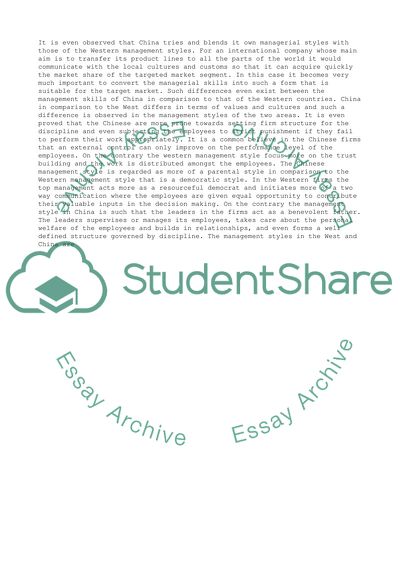Cite this document
(Difference between China's Management Style and the Western Style Essay Example | Topics and Well Written Essays - 4250 words, n.d.)
Difference between China's Management Style and the Western Style Essay Example | Topics and Well Written Essays - 4250 words. https://studentshare.org/management/1820723-to-what-extent-is-chinas-management-style-unique-and-different-from-the-western-style-how-do-you-explain-these-unique-features
Difference between China's Management Style and the Western Style Essay Example | Topics and Well Written Essays - 4250 words. https://studentshare.org/management/1820723-to-what-extent-is-chinas-management-style-unique-and-different-from-the-western-style-how-do-you-explain-these-unique-features
(Difference Between China'S Management Style and the Western Style Essay Example | Topics and Well Written Essays - 4250 Words)
Difference Between China'S Management Style and the Western Style Essay Example | Topics and Well Written Essays - 4250 Words. https://studentshare.org/management/1820723-to-what-extent-is-chinas-management-style-unique-and-different-from-the-western-style-how-do-you-explain-these-unique-features.
Difference Between China'S Management Style and the Western Style Essay Example | Topics and Well Written Essays - 4250 Words. https://studentshare.org/management/1820723-to-what-extent-is-chinas-management-style-unique-and-different-from-the-western-style-how-do-you-explain-these-unique-features.
“Difference Between China'S Management Style and the Western Style Essay Example | Topics and Well Written Essays - 4250 Words”. https://studentshare.org/management/1820723-to-what-extent-is-chinas-management-style-unique-and-different-from-the-western-style-how-do-you-explain-these-unique-features.


